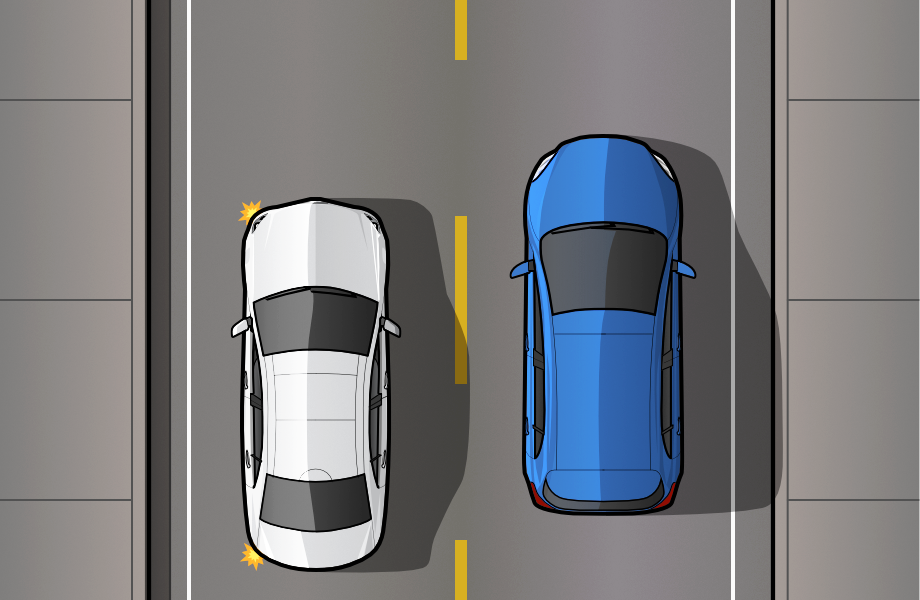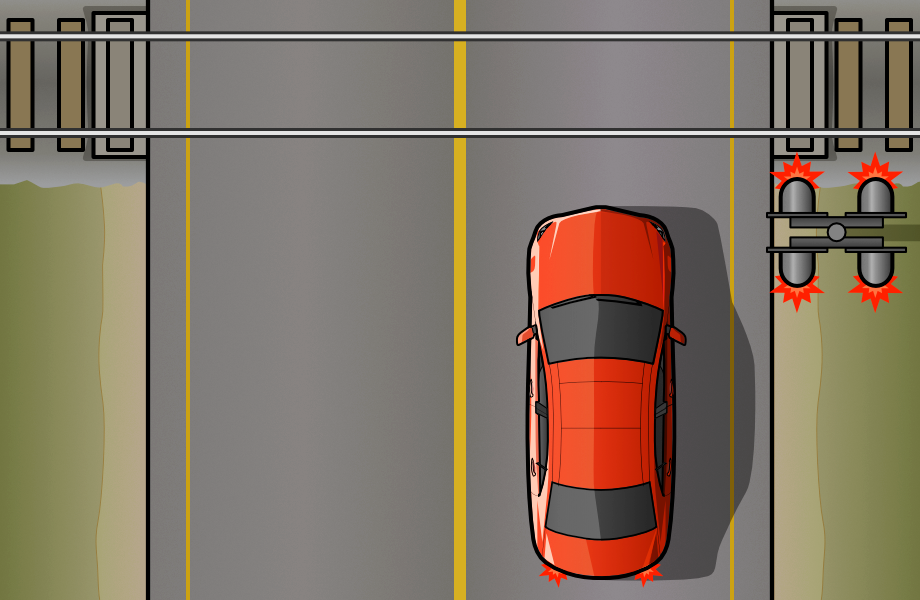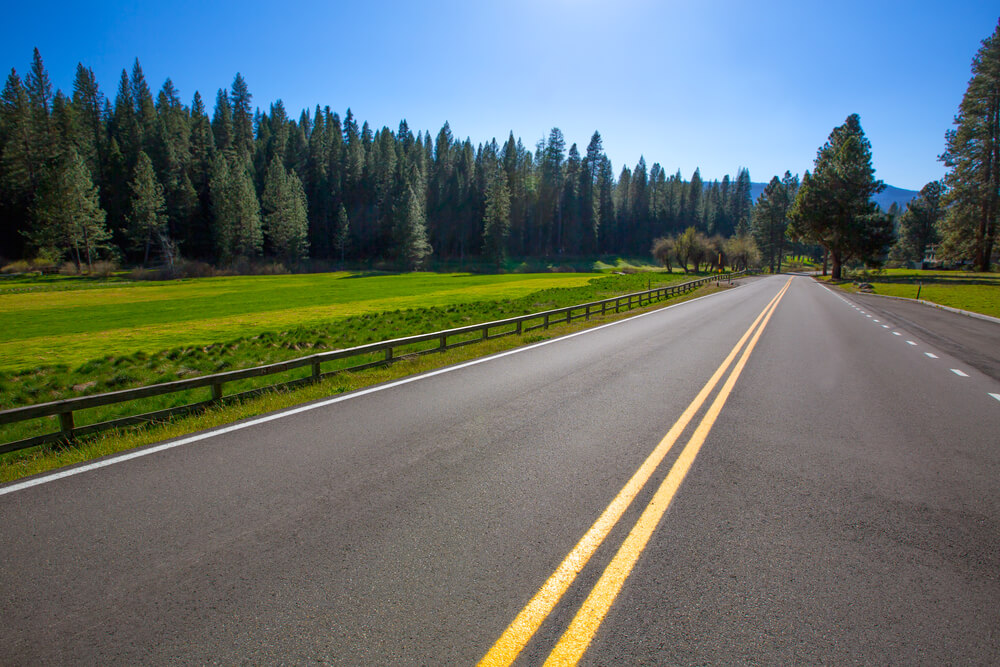Arizona State Fair Read and Ride Form
Whether visiting or moving to another state, it is crucial to familiarize yourself with the traffic laws that surround you. No matter what your intentions are toward driving, learning the rules of the road will keep you safe in an unfamiliar nation.
Some rules in America vary from land to land (and fifty-fifty in some larger cities). These differences can pertain to signage, speed limits, and the punishments for breaking sure laws. However, if you choose to drive when visiting or moving to the United States, in that location are a number of central regulations that employ beyond the country.
Good to know
Information technology's useful to know that the general mental attitude toward driving in the US is one of adventurous spirit. The idea of a "road trip" is function of the American way of life and having a machine and taking a bulldoze is an activity that people in the U.s.a. comprehend as a pastime. It is something a family unit might practice on a weekend, or something a couple or private might find themselves doing but for fun.
While there is sometimes an aura of relaxation and leisure about the driving experience, traffic laws in the U.S. are rather strict and straying from these can cause serious problem. In addition to arrest by police, the insurance structure means filing civil suits against others is very common. A small-scale infraction or blow can prove disastrous.
Therefore, it is crucial to truly empathize all the rules. That mode, if y'all are put in a stressful situation you can react accordingly without hesitation.
Some Full general Driving Rules in the Us

In that location are many rules to know. Before we go into some of the virtually of import ones, you should reference your state'south motor vehicle section to get a handle on whatever questions you may have.
That being said, a few things to think when driving include:
- Steering wheels are always situated on the left side of the car.
- Always bulldoze on the correct side of the route.
- White lines separate lanes of traffic traveling the same direction.
- Hashed or cleaved lines means you lot may change lanes when it is safe.
- Solid white lines hateful stay in your lane.
- Yellow lines separate traffic moving in opposing directions.
- Hashed or cleaved yellow lines mean you can advisedly pass, paying attention to oncoming traffic.
- Never cross a solid yellow line (or double xanthous line).
- When turning left at an intersection, pass in forepart of any cars that are turning left from the opposing direction (Do not endeavour to laissez passer behind them).
- Use the left lane to pass other cars traveling your management.
- Exercise non pass in the correct lane unless absolutely necessary.
- If you are driving in the far left mitt lane and someone would like to pass you, motility over to the correct lane when it is rubber to practice so and allow them to laissez passer.
- You must Ever yield to pedestrians.
- Come up to a complete end whenever you lot see pedestrians trying to cross the street.
- Never pass a schoolhouse bus if it has flashing red lights. Wait until the lights have stopped.
- Be enlightened of bicyclists. Often they share the route with cars and are supposed to also follow general traffic laws.
- Be particularly careful nigh driving in cities with wheel lanes -- e'er check before turning that a bike is not coming.
- It is mandatory to pull over or stop at an intersection to allow an emergency vehicle to pass you if you lot encounter one traveling with lights flashing and/or a siren running.
- Practise not overuse your car horn. Horns are used nearly exclusively for emergency situations or for when you feel dangerous.
Road Signs and Traffic Signals to Watch For

Road signs and traffic signals in the U.s. are likely unfamiliar to you if you've come from another country. While many are relatively self-explanatory, some can be more confusing if you haven't taken the fourth dimension to study them earlier you drive.
In addition, laws that surround traffic lights may be dissimilar than those followed in other countries.
Road Signs
Cease Sign: a reddish octagonal sign (by and large with a white lettered Stop) indicates that you must come to a consummate terminate at an intersection.
- Many intersections have two stop signs but oncoming traffic is NOT required to stop. Be careful when crossing or turning.
- Right of way at an intersection with a four-way end is adamant by who has come up to the intersection beginning.
Yield Sign: A white or yellow triangular sign indicates to allow oncoming traffic the right of style.
- You must wait for oncoming traffic to clear earlier moving ahead, therefore, information technology is usually appropriate to slow downward and check oncoming traffic before progressing.
One Way: A sparse horizontal rectangular sign (usually white with a blackness pointer) indicates that yous may but progress a certain mode downwardly a street - the arrow should tell you which way.
Speed Limit: these signs (unremarkably a large vertical rectangular sign) say how fast you may get in miles per hr in a particular area.
- Limits can modify relatively often, even on the highway, so pay attending.
- Sometimes these too indicate a minimum speed.
Railroad Crossing: Unremarkably a big X or a pair of crossed train tracks.
- May include the words railroad crossing or messages RR.
- Lights and ringing should bespeak if in that location is a train coming. If you reach a railroad crossing sign that does not have accompanying lights, come to a complete stop and bank check both ways earlier proceeding.
Parking/No Parking
- Read all signs to make sure you are legally allowed to park. Many signs have a time limitation and at that place tin can be other restrictions similar a necessary permit.
- Some spots are only for handicapped drivers.
- A curb painted yellow usually indicates no parking is immune.
Traffic Lights
- Generally with blood-red, yellowish, and green lights.
- Green means you lot may go through.
- Yellow means to slow downward in grooming to terminate.
- Red means you must stop until the low-cal changes.
- A flashing yellow light indicates proceeding with caution.
- Information technology is legal to plow right at a cerise low-cal unless indicated by a NO TURN ON RED sign.
- Oncoming traffic has the right of way - wait until traffic clears before turning.
- It is not legal to make a left turn at a carmine lite.
Safety
Route safety rules are universal the world over, only in the US in that location are strict laws to back up some of these regulations.
- E'er wear a safety belt when driving or riding in a car.
- Younger children must be in machine seats or booster seats and cannot ride in the front rider seat. Rules on this vary slightly from state to state, but are mostly similar.
- It is illegal to drink and drive in all 50 states. While punishments vary, .08% is the blood alcohol concentration that is the legal limit (roughly two drinks in an hour, merely depends on a multitude of factors such equally metabolism, weight, etc.).
- Do not text and drive. Some states prohibit the use of handheld devices.
- Headlights must be used in inclement weather or afterwards sunset. In many states, if you lot are using the windshield wipers, headlights are also required.
- Hitchhiking is generally illegal throughout the United states. Do not pick anyone upwardly who is asking for a ride.
- If you have an emergency, call 911 to inform police force.
U.Southward. Traffic Tickets and Violations
Traffic tickets can exist received for many infractions including parking violations, speeding, or going through stop signs. Most tickets result in a fine which is based on the severity of infraction and local laws.
Some tickets may be given without you noticing. There is increasing use of cameras to monitor traffic. For case, if y'all go through a toll berth without paying, a camera will likely catch you and send a ticket to the owner of the vehicle. If information technology is a rental motorcar they will add a ticket price to your bill.
Paying a fee as soon as possible is skilful practice. Depending on the state you may be able to pay your fine online.
If Pulled Over By The Police
- If a police officer asks you lot to pull over, or is running lights directly behind y'all, pull over immediately and stop on the side of the road where it is prophylactic to practice so.
- DO Non get out of the car unless asked to do so by the officer.
- Keep your hands visible and on the steering bicycle.
- Keep license in a convenient location and your registration in the glove compartment so information technology is easy to access.
Types of Roads

In that location are many ways roads are referred to across the The states, but the major categories corporeality to:
Local roads running through small communities and going into neighborhoods. These are more often than not small roads with low speed limits. While most are paved, some are dirt or gravel.
Collector roads by and large are providing access to businesses or as thoroughfares for access from unlike local roads. Speed limits can vary. Collector roads sometimes go through pocket-sized towns and the limit tin driblet rapidly and dramatically. Exist conscientious equally these places are closely monitored by police.
Arterial roads are highly trafficked mostly urban roads. Centrally located these bulldoze traffic from collector roads onto major highways. Arterial roads often accept traffic signals and signs to be aware of.
Freeways are the well-nigh highly trafficked roads and offering speedier travel since they have very little traffic lights and take college speed limits. On and off ramps connect a freeway to an arterial route.
Tollways (or Turnpikes) are generally a kind of motorway (though not ever) that require users to pay a sure amount for use. Fees are based on vehicle type and tin vary.
- Keep cash and alter on you at all times if y'all are traveling price roads.
- Y'all might want to become a device that allows for automatic tolls to be taken out via a transponder. They make travel easier and allow yous to use automatic toll lanes.
- Some rental machine companies will rent one of these to you lot for a fee.
Tolls and Toll Violations
- In that location are commonly options to pay tolls either in cash to a person, machine, or via the automated transponder.
- Some lanes are but for those with the transponder device.
- If yous notice yourself stuck accidentally in an automatic toll lane and you practice non have the transponder, you volition be in violation if you do not pay the toll.
- You may be able to pay online within a sure amount of time without getting an added fine.
These are simply some of the many laws and regulations you lot volition desire to know about when driving in the U.S. With some common sense and a piddling understanding, you will shortly see why and so many Americans love to "striking the route" every year.
marshallholed1953.blogspot.com
Source: https://driving-tests.org/beginner-drivers/rules-of-the-road/
Post a Comment for "Arizona State Fair Read and Ride Form"